Recently, leaked information has revealed that MediaTek’s next-generation flagship SoC, the Dimensity 9300, may adopt a full big core CPU architecture. Based on ARM’s new mobile processor reference design, it will feature a “4+4” configuration, consisting of 4 Cortex-X4 super big cores and 4 Cortex-A720 big cores. Additionally, it will upgrade to the new fifth-generation GPU, the Immortalis-G720.
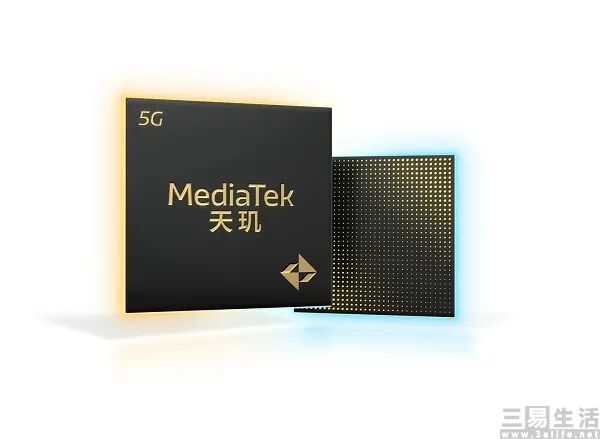
There are rumors that, thanks to its low-power design, the Dimensity 9300 will show significant improvements in energy efficiency. However, it has also been reported that the Cortex-X4 super big cores in the Dimensity 9300 may not be of the same specification, possibly consisting of 1 high-frequency Cortex-X4 and 3 lower-frequency Cortex-X4 cores. If true, this would mean it effectively uses a “1+3+4” tri-cluster CPU architecture.
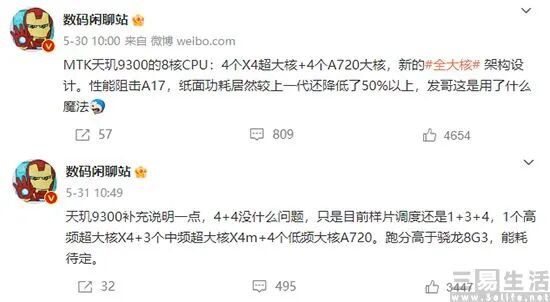
Speculation suggests that MediaTek’s decision to implement this design in the Dimensity 9300 is likely aimed at balancing power consumption and performance. According to information released by ARM, the new super big core Cortex-X4 can achieve a 15% performance increase or a 40% reduction in power consumption. However, these are just theoretical figures, and in practical use, it will face a series of issues such as tuning, physical characteristics, and the heat accumulation and dissipation problems caused by increased power consumption.
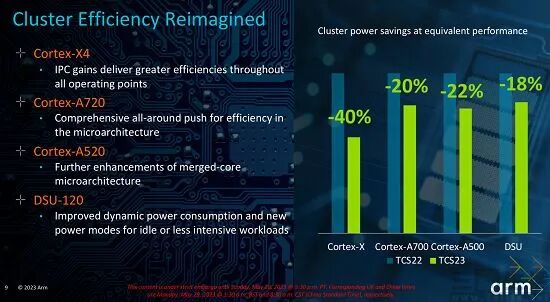
Moreover, another possible reason for MediaTek’s adoption of this “super big core high-low pairing” scheme is the use of the DSU-120 compute cluster in ARM’s new mobile processor design, which drives the DynamIQ shared unit system, allowing different CPU cores to work together effectively, aiming to catch up with or even surpass Qualcomm’s next-generation flagship SoC, the Snapdragon 8 Gen3, in CPU performance.
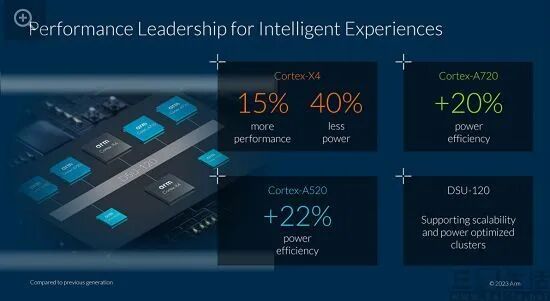
Specifically, the currently leaked configuration for the Dimensity 9300 may attempt to leverage 1 high-frequency super big core Cortex-X4 for high-performance, high-load applications, at least matching the Snapdragon 8 Gen3’s super big core, while the relatively lower-frequency 3 Cortex-X4 cores, due to their higher execution efficiency, may offset the Snapdragon 8 Gen3’s big cores, potentially gaining advantages in power consumption and performance.
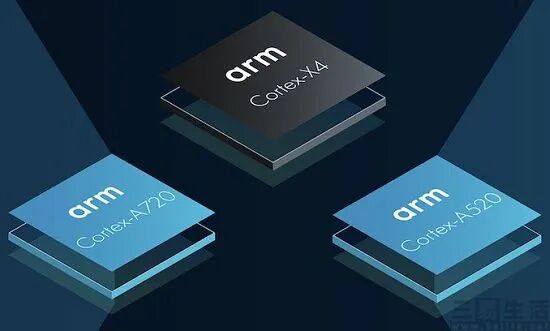
It is evident that MediaTek seems to be adopting a targeted “Tian Ji’s horse racing” strategy, using 1 ultra-high-frequency Cortex-X4 as the “upper horse”, 3 high-frequency Cortex-X4 as the “middle horse”, and 4 Cortex A720 cores as the “lower horse” to compete against the Snapdragon 8 Gen3’s tri-cluster architecture.

Although Qualcomm has not yet disclosed information about the Snapdragon 8 Gen3, there are already rumors that this new SoC may adopt a “1+5+2” CPU architecture, which is also based on ARM’s reference design. It is said to possibly include 1 Cortex-X4 super big core, 5 Cortex-A720 big cores, and 2 Cortex-A520 small cores.

Historically, the GPU has undoubtedly been Qualcomm’s strong suit in the Snapdragon mobile platform. For instance, the GPU section of the Snapdragon 8 Gen2 features the higher-spec Adreno 740, which even saw a frequency drop from the previous generation Adreno 730’s 900MHz to 680MHz, yet still delivered significantly better performance.
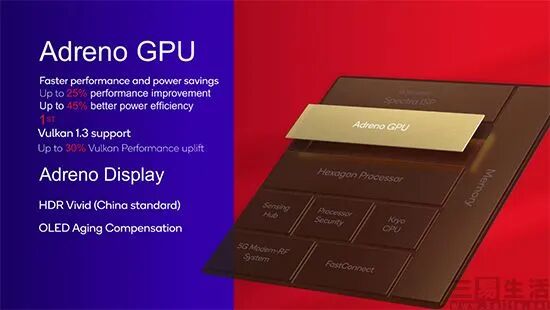
With the adoption of a “low-frequency high-spec” GPU design, Qualcomm seems to have opened the “door to a new world”. The Snapdragon 8 Gen2 has significantly improved performance while effectively reducing power consumption. If the necessity for a “low-frequency high-spec” design was due to immature manufacturing processes or tuning, then once these conditions mature, switching to a “high-frequency high-spec” design will undoubtedly become inevitable.
Previously, there were leaks suggesting that the GPU performance of the Snapdragon 8 Gen3 could increase by up to 50%, which is likely unattainable with a “low-frequency high-spec” design.
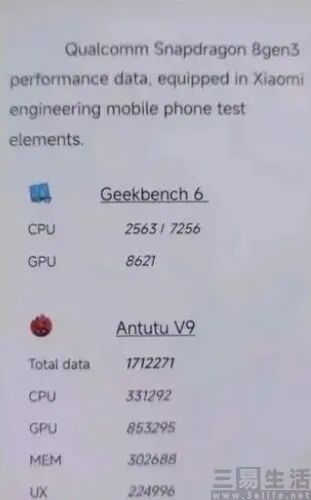
Another highlight of the next-generation flagship SoC is undoubtedly the manufacturing process. Recently, ARM emphasized in the specifications of its new mobile processors that the new flagship SoC will be built using TSMC’s 3nm process, and the Cortex-X4 super big core samples have already been taped out using TSMC’s N3E process.
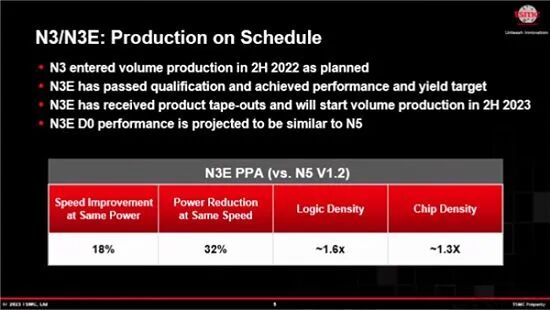
However, it is important to note that there have been rumors that TSMC’s 3nm process capacity for 2023 may have been monopolized by Apple for the production of the A17 Bionic chip and M3 chip, and the yield may not be satisfactory for Apple. Therefore, reports indicate that both the MediaTek Dimensity 9300 and Qualcomm Snapdragon 8 Gen3 may adopt TSMC’s N4P process technology. Thus, the flagship SoCs in the Android camp may have to wait until the next generation to utilize the 3nm process.

As leaks about MediaTek’s new flagship SoC continue to emerge, Qualcomm has also announced that this year’s Snapdragon Technology Summit will be held from October 24 to October 26. Following past practices, it is highly likely that the new flagship SoC, the Snapdragon 8 Gen3, will be unveiled during this event. Therefore, the specific details of the next-generation flagship SoC in the Android camp will be officially revealed by the end of this year.
【Images in this article are sourced from the internet】Recommended Reading:
iPhone 14 Pro 6159? Pinduoduo has “bone fracture prices” everywhere during 618!
April Android Phone Cost-Performance Rankings: Xiaomi, OPPO, and Vivo’s top flagship models face off directly.
May Android Phone Performance Rankings: iQOO Neo8 Pro tops the list, Dimensity 9200+ challenges nine others.
May Android Phone Review Rankings: Meizu 20 Pro takes the crown.